Devil’s Lake lies in one of Wisconsin’s most scenic and treasured state parks in the winter. Its trails take hikers and snowshoers up on quartzite rock bluffs 500 feet above a picturesque 360-acre spring-fed glacial lake and through the forested Baraboo Hills.
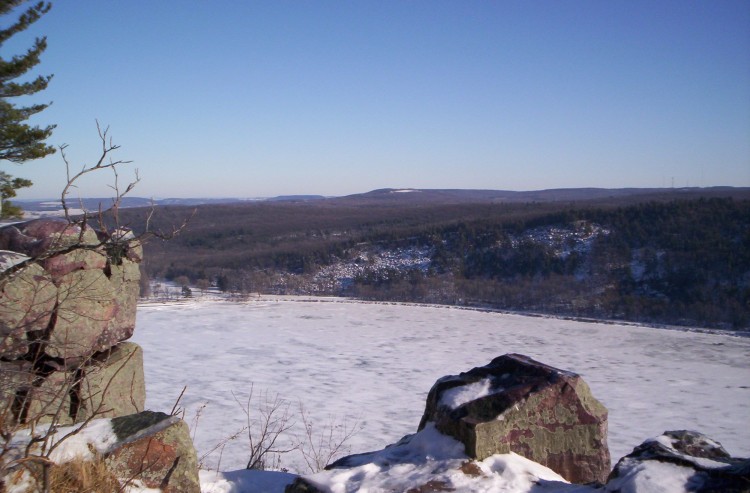
Devil’s Lake has many theories of where the name originated. But, whatever reason for the title, it sure is magical in winter! Photo: Jim Joque
About Devil’s Lake and the Name
Located in south-central Wisconsin, about 35 miles northwest of the state capital of Madison and three miles south of Baraboo, the 10,200-acre Devil’s Lake State Park offers fun in the sun. A multitude of summer and winter activities bring over 2.5 million annual visitors.
But why would it be called Devil’s Lake? Though the park has a rich history, I am not sure how the devil got into its name. I found a few theories from various sources.
It may be that the Ho-Chunk Nation of the area named it such because it was said that voices of spirits were often heard during their celebrations held there. So the name they gave to the lake was “Da-wa-Kah-char-gra,” meaning “Spirit Lake.”
Another version I found referenced a document of the Smithsonian National Archives dated 1885. It read that an individual from the Winnebago tribe was on the bank of the lake offering devotion to the Supreme Being. While fasting, an animal told him he would live a long and happy life. The lake would be called “Sacred Lake” and pronounced “Ta-wah-cun-chunk-dah.” And another translation is that the Native Americans of the area gave the name “Minnewaukan” to the lake, meaning “Evil Spirit Lake.”
One resource wrote that early settlers and visitors mistranslated the Native American meaning. It was also pointed out that around the 1840s, white settlers called the lake “Devil’s Lake” because it was a more exciting name for commercial purposes in bringing curious visitors to the area via the railroad.
And yet one other resource cites that Devil’s Lake was given its name because it is located in a deep chasm with no visible inlet or outlet (maximum depth of the lake is 47 feet).
Read More: Southwest Wisconsin’s Great Snowshoe Trails
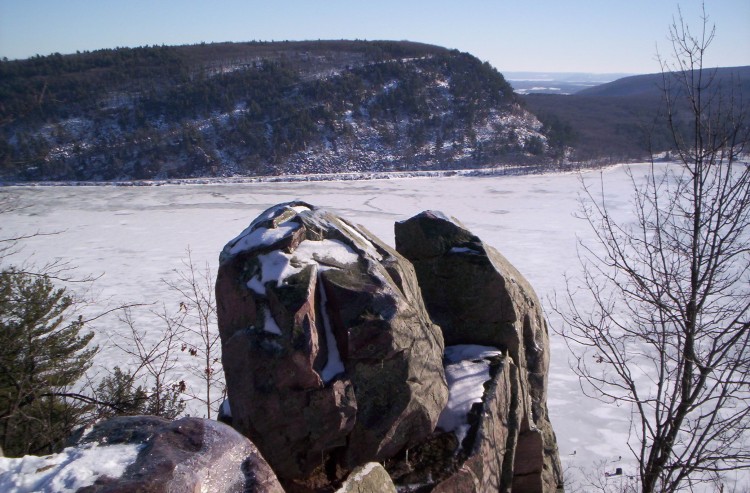
The geology is unique. Here, a giant rock formation you can find on the west side of Devil’s Lake. Photo: Jim Joque
Winter Trails at Devil’s Lake
Whatever the reason for its name, Devil’s Lake State Park is one of Wisconsin’s 100 state parks, forests, recreation areas, and state trails that offer a variety of terrain for winter activities, including hiking and snowshoeing.
Twenty-nine miles of hiking trails beckon snowshoers to take the challenge during the winter, with nearly 14 of those miles being on Wisconsin’s 1,000-mile Ice Age National Scenic Trail. And there are also 17 miles of groomed trails for cross-country skiers.
Two of its routes (West Bluff and East Bluff) provide panoramic views of the picturesque lake and forest below. You can also mix and match trails listed below for the way up and back. If you do so, it would be 3.5- to 4-miles, depending on your routes of choice.
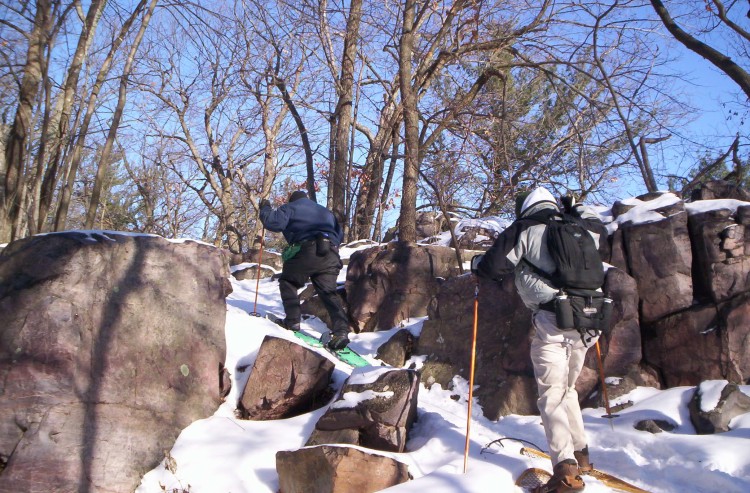
Be cautious of climbs along the way. For example, there is a steep climb up onto the West Bluff Trail. Photo: Jim Joque
West Bluff Trail
The hiking trail that provided me with great views from high above Devil’s Lake was the 1.4-mile West Bluff Trail (also part of the Ice Age Trail). The trail begins at the southwest parking lot and boat landing. Then, it goes uphill to 500 feet above the ice-covered lake.
The climb up is steep until reaching the plateau at the top. It was a huff-and-puff challenge ascending so quickly. The trail then meanders through a mixed hardwood and conifer forest and open areas on the bluff overlooking the lake. Prospect Point is found along this trail, one of a few popular giant rock formations in the park. It is a huge and tall boulder standing upright as if guarding over the lake.
Taking caution is a must if you go this route. Do not attempt to go anywhere close to the bluff’s edge or on rock formations. Snow and ice can cause you to slip. Each year the park experiences severe injury or death to people who have taken unsafe chances. If there is not enough snow for snowshoeing, having a traction device (like these Yaktrax we reviewed) can also be helpful.
Read More: Safety First: Snowshoeing Hazards and How To Avoid Them
East Bluff Trail
The East Bluff trail (1.1 miles) is the most gradual way up to the bluff, with scenic views of the lake along the way. If you’d like, you can also use this trail on the way down from the lake and use the West Bluff Trail on the way up. If you use the West Bluff on the way up, you would only need to snowshoe around the north end of the lake to reach the East Bluff trail for the way down.
East Bluff Woods
Similar to the East Bluff Trail, you can also use East Bluff Woods as a return trip from the lake. This 1/3 mile moderate trail goes through the forest. The views of the lake are blocked on the way up and way back, but the forest offers a serene snowshoe outing.
Read More: Snowshoeing Along the Ice Age National Scenic Trail
Tumbled Rocks Trail
Finally, you could take the 1-mile Tumbled Rocks Trail. This trail is relatively easy and goes along the lake’s west shoreline. The Tumbled Rocks Trail is the most popular trail at Devil’s Lake and provides views right at the lake’s shore.
On this particular adventure, I took the Tumbled Rocks Trail on my return trip after taking the West Bluff Trail on the way up. By using the Tumbled Rocks Trail as a return made my hike about a 2.5-mile loop. This choice was the easy route, and I’m glad I took it! I was able to see magnificent talus slopes of mega-sized quartzite boulders that, over time, tumbled down from 400 to 500-foot heights.
I also walked among huge boulders bordering the lake. In my journal, I wrote, “On most of the trail were large boulders along the shoreline that were glimmering from the south sun shining off the ice and snow on boulder tops, giving an illusion of walking through a giant diamond field.”
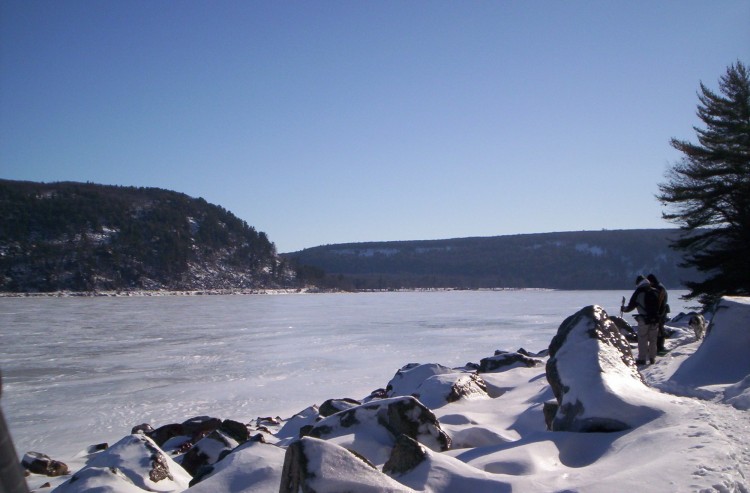
The adventure was like snowshoeing through a giant diamond field along Devil’s Lake west shore. Photo: Jim Joque
Explore Devil’s Lake in the Winter
The park is open year-round from 6:00 a.m. to 11:00 p.m. You may camp in the winter at Devil’s Lake. You just need an annual or daily Wisconsin State Park Vehicle admission sticker for camping, or to explore the trails. For additional information about Devils Lake State Park, go to their website or call the Visitor Center at 608 356-8301.
For visitors to Wisconsin, Devil’s Lake State Park would be a welcoming start to any snowshoeing adventure in the Midwest. Of course, there are numerous other opportunities in this dairy state to snowshoe, but why, the devil, not start at Devil’s Lake?
Have you or would you visit Devil’s Lake in the winter? What recommendations do you have? Please share your thoughts with us in the comments below.
This article was first published on January 12, 2015, and Susan Wowk most recently updated it on January 20, 2022.
Read Next: Snowshoeing Close to Home on a Wisconsin Flowage and Wildlife Area

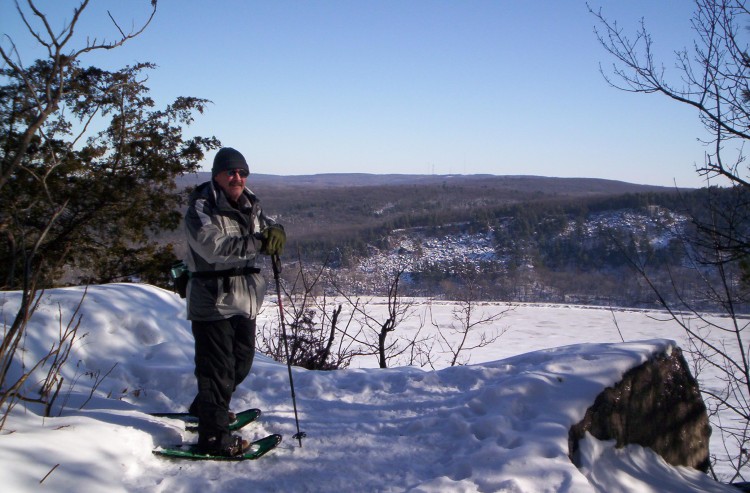
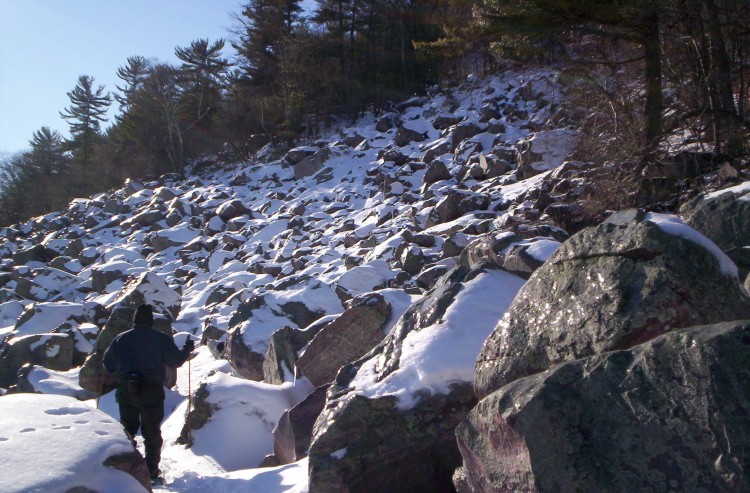
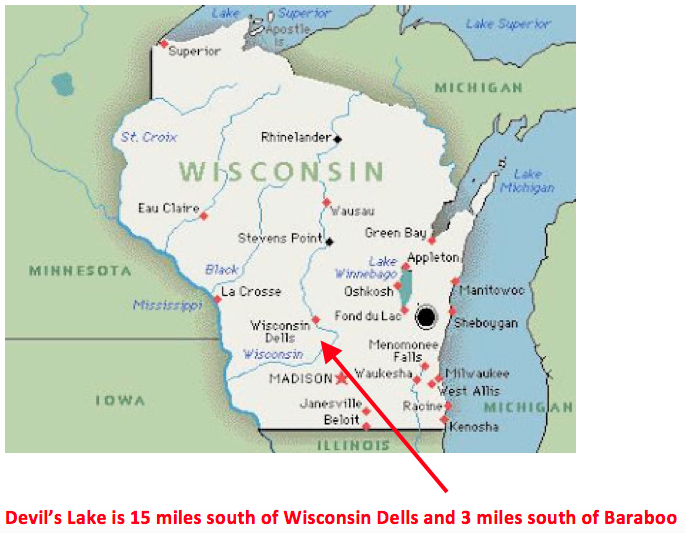
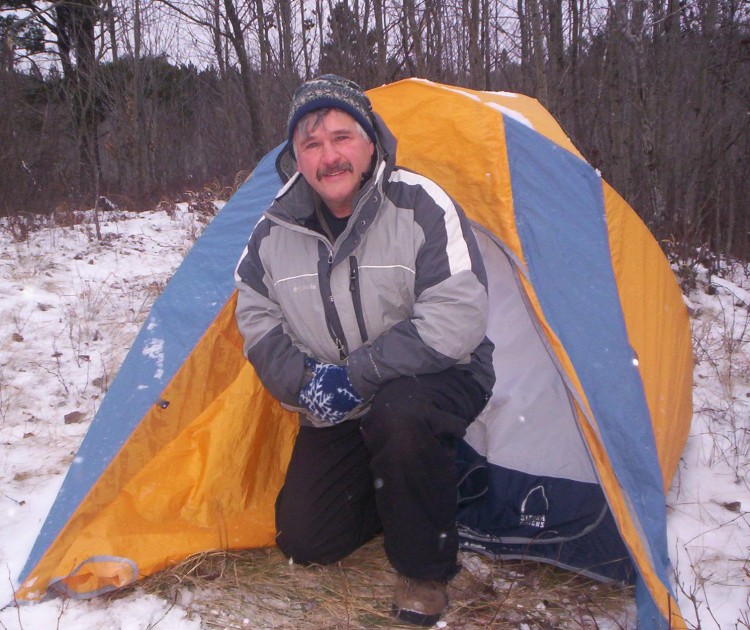
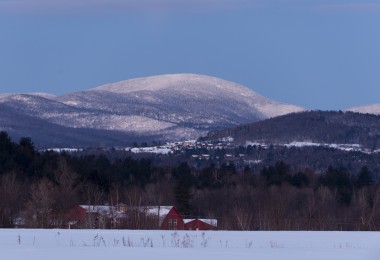
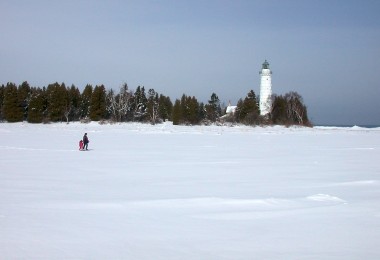
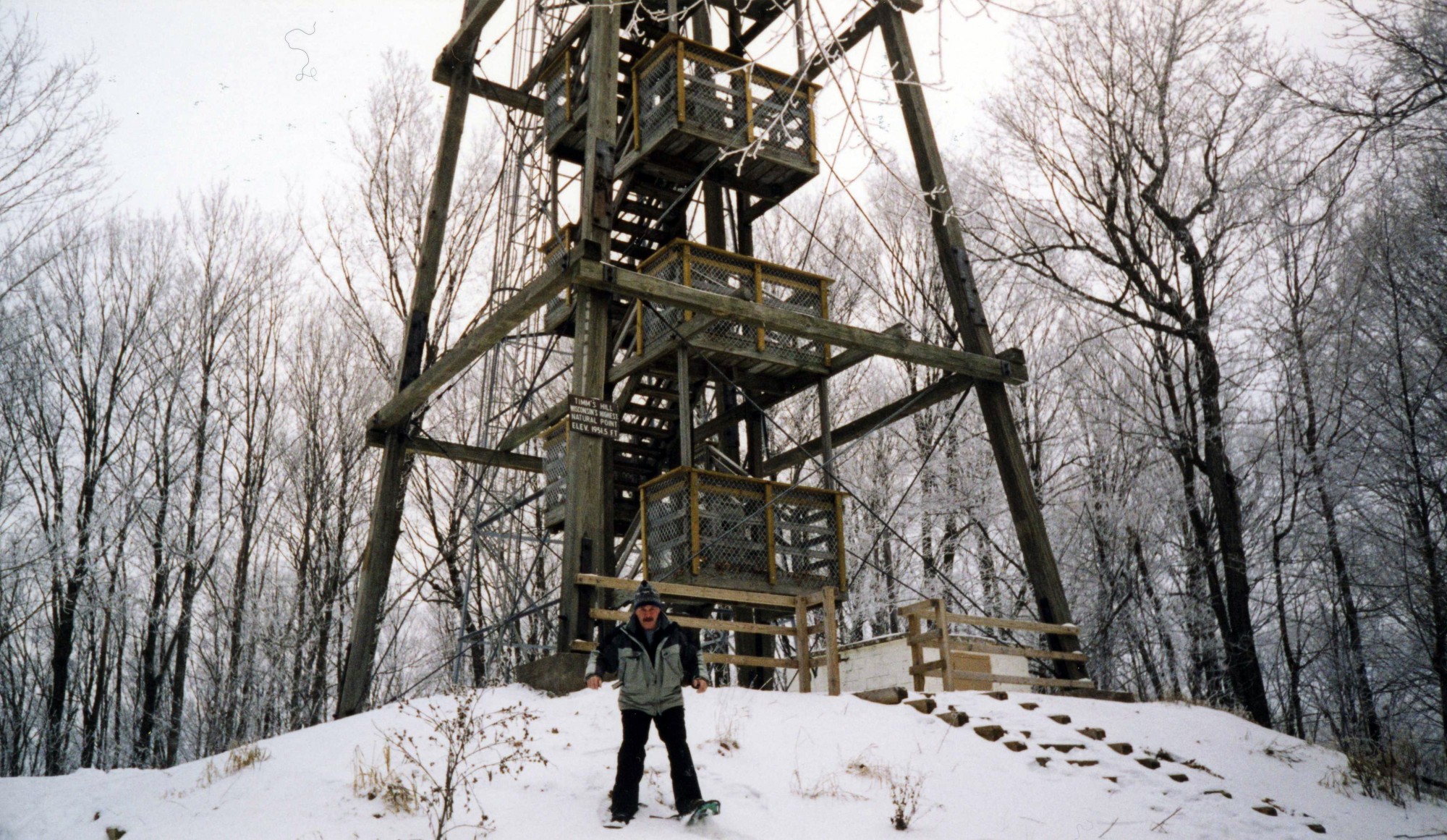
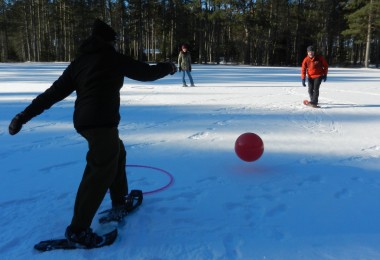

Jim~
Thank you for highlighting this WI treasure!
I had the pleasure of spending an inordinate amount of time exploring its wonders thanks to its proximity to Madison.
Awesome venue any time of year!
Be well.
~jsk